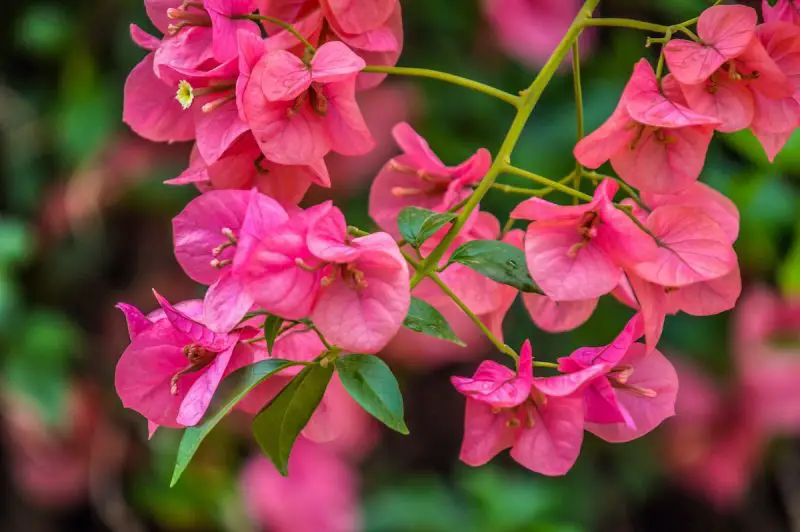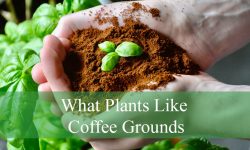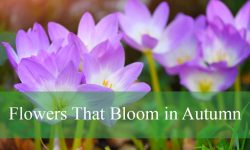Bougainvillea is one of the most striking and colorful plants you can grow, instantly transforming any garden, wall, or patio into a vibrant paradise. Known for its paper-like bracts that burst in shades of magenta, purple, orange, and white, this stunning plant is surprisingly low-maintenance—if you know what it needs. That’s where proper Bougainvillea Plant Care makes all the difference.
In this ultimate guide to Bougainvillea Plant Care, you’ll learn everything you need to keep your plant thriving year-round. From sunlight and soil preferences to pruning, watering, and overwintering tips, we’ll cover it all. Whether you’re growing bougainvillea in the ground or in containers, this guide will help you unlock its full blooming potential.
What is Bougainvillea?

Overview of the Bougainvillea Plant
Bougainvillea is a genus of thorny ornamental vines, bushes, or trees. Native to South America, particularly Brazil, Peru, and Argentina, it has adapted well to warmer regions around the globe. The plant gets its name from the French naval admiral and explorer Louis Antoine de Bougainville.
Although often mistaken for flowers, the colorful parts of Bougainvillea are actually papery bracts that surround the plant’s small, tubular white flowers. These bracts are what make the plant so popular among gardeners and landscapers.
Bougainvillea Plant Growing Zone
Bougainvillea thrives in warm climates and is best suited for USDA hardiness zones 9 through 11. In these zones, the temperatures remain mild throughout the year, allowing the plant to grow vigorously and bloom continuously. Bougainvillea cannot tolerate frost, so it is typically grown as a perennial only in areas where winter temperatures do not dip below 25°F (-3.8°C).
Gardeners living outside these zones can still enjoy bougainvillea by growing it in containers and bringing it indoors during the colder months. When cultivated as a potted plant, bougainvillea does best in a sunny location with well-draining soil and regular watering during its active growing season. Knowing your local growing zone is essential for ensuring long-term success and vibrant blooms from this colorful tropical climber.
Common Species and Varieties
There are over 300 varieties of Bougainvillea, but the most commonly cultivated ones include:
-
Bougainvillea glabra – Known for its smooth leaves and purple bracts.
-
Bougainvillea spectabilis – Larger leaves and a variety of colorful bracts.
-
Bougainvillea peruviana – A less common type, often hybridized with others.
-
Hybrid varieties – Including compact, dwarf, and thornless options ideal for containers.
These species differ slightly in growth habit, size, and flower production but share many care requirements.
Bougainvillea Plant Growing Conditions
Light Requirements
Bougainvillea performs best when exposed to abundant sunlight throughout the day. Its brilliant, papery bracts—the signature feature of this plant—develop most vibrantly when the plant receives at least five to six hours of direct sunlight daily. While it can survive in areas with partial shade, the reduced light often leads to lush vegetative growth rather than an abundance of colorful blooms.
In particularly hot climates, the afternoon sun can sometimes be harsh, especially during peak summer months. In these instances, providing light shade during the hottest part of the day can protect the foliage from scorching without significantly reducing flowering. However, in general, more sunlight leads to a more impressive floral display, so a bright, open space remains ideal for cultivating this sun-loving vine.
Soil Preferences
The roots of Bougainvillea need room to breathe, so well-draining soil is crucial to prevent problems like root rot. It grows well in sandy or loamy soil that allows water to flow through easily, helping to maintain an environment where the roots are never waterlogged. Enriching the soil with compost or aged organic matter also contributes to overall plant health and vigor.
A slightly acidic to neutral pH range, ideally between 5.5 and 6.5, supports optimal nutrient absorption. If your garden soil is heavy or clay-based, amending it with coarse sand, perlite, or pumice before planting will improve both aeration and drainage. This not only ensures healthy root development but also encourages better flowering performance throughout the season.
Temperature and Humidity
Bougainvillea is well-suited to warm, tropical, or subtropical environments and flourishes within USDA hardiness zones 9 through 11. It thrives in daytime temperatures ranging from 60 to 95 degrees Fahrenheit (15 to 35 degrees Celsius). This plant does not tolerate frost and will suffer damage or die back if exposed to freezing temperatures for extended periods.
In cooler climates, Bougainvillea can be grown in containers and moved indoors during the winter months to protect it from cold damage. While the plant is known for its drought resistance, it does best in conditions with moderate humidity. If the air becomes too dry, occasional misting or grouping it with other plants can help maintain moisture levels around the foliage, promoting lush growth and vibrant coloration.
How to Plant Bougainvillea
Choosing the Right Location
Bougainvillea needs a bright, sun-drenched spot to reach its full potential. When selecting a location, look for an area that receives direct sunlight for the majority of the day and is somewhat shielded from strong winds that could damage its sprawling branches. For climbing varieties, choose a spot near a structure such as a fence, trellis, or arbor. These surfaces offer support and allow the plant to grow vertically, creating a stunning display.
If you’re planting in containers, it’s important to choose pots that allow water to drain freely. A lightweight potting mix formulated for cacti or succulents often works well, as it promotes fast drainage and prevents moisture buildup around the roots. Position the containers where they can get full sun exposure and avoid areas where water tends to collect.
Steps for Planting
Begin by digging a hole that is approximately twice as wide and deep as the root ball of the Bougainvillea. This extra space allows the roots to spread out easily and establish themselves more quickly. If your native soil is dense or lacks nutrients, mix in some compost or organic matter to improve its texture and fertility. The goal is to create a light, airy environment that doesn’t hold too much water.
When placing the plant into the hole, ensure the top of the root ball sits slightly above ground level. This helps prevent water from pooling around the base, reducing the risk of rot. Once the plant is in position, fill the hole back in with the amended soil, gently pressing it down around the roots to eliminate air pockets. After planting, water the area thoroughly to help settle the soil. A light layer of mulch can be added around the base to retain moisture and suppress weeds, but keep it away from the stem to avoid fungal issues.
Watering Bougainvillea the Right Way
Establishing the Plant
In the early stages after planting, Bougainvillea benefits from a consistent watering schedule to help develop a strong root system. During the first few months, it’s best to water two to three times per week, especially during dry spells or hot weather. However, it’s important not to keep the soil constantly wet. Let the top layer of soil dry out slightly between waterings to encourage the roots to grow deeper in search of moisture.
This balance helps the plant adapt to its environment and reduces the risk of root rot, which can occur if the soil remains overly moist. As the plant becomes better established, you can gradually reduce the frequency of watering, transitioning it to a more drought-resilient routine suited to its mature needs.
Mature Plant Watering Needs
Once Bougainvillea is well established, its watering requirements change significantly. It becomes notably more tolerant of dry conditions and actually performs better when water is given sparingly. Too much moisture can reduce blooming and may cause root-related problems. Deep watering once a week is usually sufficient, especially in extended dry weather.
For container-grown plants, it’s important to check the moisture level of the soil regularly. Water when the top one to two inches feel dry to the touch. Always make sure that pots have adequate drainage holes, and avoid letting excess water accumulate in saucers. Proper drainage is key to keeping the roots healthy and the plant thriving with vibrant blooms.
Feeding and Fertilizing Bougainvillea
Best Fertilizers to Use
Bougainvillea thrives when given the right nutrients, especially during its active growing and blooming periods. A balanced fertilizer such as 10-10-10 supports overall health, but for more vibrant bracts, formulas higher in potassium are especially effective. This nutrient enhances flower development and color intensity, encouraging the plant to produce its iconic display more consistently.
Both slow-release granules and liquid fertilizers can be effective. Granular types offer convenience by providing nutrients over a longer period, while liquid feeds deliver quick results and allow more precise control. Early in the season, a general-purpose fertilizer encourages leafy growth, setting the foundation for later blooms. Once the plant begins budding, switching to a bloom-boosting formula like 10-30-10 can significantly enhance flowering.
Fertilizing Schedule
In spring, as the plant exits dormancy and new growth begins, it’s a good time to start fertilizing. Feeding every four to six weeks supports healthy development and prepares the plant for a productive season. As temperatures warm and growth accelerates in summer, monthly applications help maintain flowering vigor and overall plant strength.
By fall, the frequency of feeding should decrease as the plant naturally slows its growth. At this stage, overfeeding can lead to excess foliage and reduced blooming. During the winter months, when the plant enters dormancy or significantly reduces activity, fertilizing should be avoided altogether. Always adhere to the product instructions to prevent nutrient overload, which can harm roots and lead to diminished flowering.
Pruning Bougainvillea for Shape and Blooms
Why Pruning is Important
Pruning plays a key role in maintaining the shape, size, and overall health of Bougainvillea. By trimming back overgrown or unruly stems, you can guide the plant’s form and encourage denser, more compact growth. Removing dead, damaged, or crossing branches also improves air circulation, reducing the risk of disease and allowing light to reach the inner parts of the plant.
One of the most important reasons to prune Bougainvillea is to stimulate blooming. Since it flowers on new growth, pruning encourages the development of fresh shoots, which in turn produce more of the plant’s signature colorful bracts. Regular trimming, especially after a bloom cycle, keeps the plant productive and visually appealing.
When and How to Prune
The best time for major pruning is in late winter or early spring, just before the plant begins its new growth cycle. This is when shaping or rejuvenating the plant will have the greatest effect without interfering with flowering. A hard prune at this time can restore structure, control size, and promote a flush of fresh growth heading into the warmer months.
Throughout the growing season, light pruning after each flowering period helps maintain continuous blooming. Simply trimming back spent flower clusters and tip growth can encourage the plant to produce additional buds. When pruning, always use clean, sharp shears to make clean cuts that heal quickly. Due to Bougainvillea’s sharp thorns, wearing gloves is highly recommended for protection while handling stems and branches.
Training Bougainvillea as a Vine or Tree
Trellising and Vertical Growth
Although Bougainvillea is a natural climber, it lacks the tendrils or adhesive pads that some vines use to cling to surfaces. This means it needs guidance and support to grow vertically. When training it along structures like trellises, fences, or pergolas, use soft ties or garden wire to gently secure the stems in place. Be careful not to tie them too tightly, as this can damage the plant or restrict its growth.
Directing the plant early in its development makes shaping much easier over time. As the vine grows, continue tying new shoots and pruning away those that stray from your desired path. Regular attention helps the plant establish a well-organized framework, ensuring an impressive vertical display covered in blooms throughout the season.
Creating a Bougainvillea Tree
With patience and routine care, Bougainvillea can also be shaped into a small ornamental tree, known as a standard. Start by choosing a healthy, upright stem to act as the main trunk. Remove any lower side shoots or competing stems as the plant grows, focusing all energy on the central leader. Support it with a sturdy stake until the stem thickens and becomes strong enough to hold itself upright.
Once the main trunk reaches your desired height, begin pruning the top to encourage branching. Over time, these branches will form a rounded, canopy-like head, giving the plant its signature tree shape. Maintaining this form requires regular pruning to control new growth, as Bougainvillea tends to revert to its natural, vining habit if left unattended. The result, however, is a dramatic focal point ideal for gardens, patios, or large containers.
Growing Bougainvillea in Containers
Choosing the Right Pot
When growing Bougainvillea in containers, the choice of pot makes a significant difference in the plant’s health and performance. Opt for a container that is at least 12 to 16 inches wide to give the roots ample room to spread. Good drainage is essential, so the pot must have multiple holes at the bottom to prevent excess moisture from accumulating.
Materials such as terra cotta or unglazed ceramic are excellent options because they’re porous and allow better airflow to the root zone. These types of pots also help regulate moisture, which is especially important for Bougainvillea since it dislikes soggy soil. A sturdy, heavy pot is also helpful to stabilize the plant as it grows and climbs.
Container Care Tips
Bougainvillea grown in containers requires a light, fast-draining potting mix to mimic its native soil conditions. A cactus or succulent mix works well, or you can amend regular potting soil with perlite and coarse sand to improve drainage. Container plants tend to dry out more quickly than those in the ground, so more frequent watering is necessary, particularly during hot weather.
Regular feeding helps support flowering, so apply a balanced or bloom-boosting fertilizer once a month during the growing season. Pruning is also important to manage the size and shape of the plant, especially in limited space. In colder regions, container-grown Bougainvillea can be moved indoors for winter protection. Place it in a bright, cool location and reduce watering to help the plant rest until spring arrives.
Bougainvillea Blooming Tips
How to Encourage More Blooms
Getting Bougainvillea to bloom profusely often comes down to creating just the right balance of light, stress, and nutrition. Sunlight is one of the most crucial factors—these plants need at least five to six hours of direct sunlight each day to initiate and maintain their vibrant bracts. Without enough light, even healthy plants may fail to flower properly.
Mild water stress can actually encourage blooming. Allowing the soil to dry out slightly between waterings signals the plant to focus its energy on reproduction, which includes flower production. Pruning is another helpful technique; removing faded blooms and lightly trimming after each cycle keeps the plant neat and encourages new shoots that will support future blossoms.
Using the right fertilizer is essential. Choose a formula that is low in nitrogen but high in potassium, such as a bloom booster blend. Nitrogen-rich fertilizers should be avoided, as they lead to excessive leaf growth at the expense of flowers. A balanced feeding schedule combined with proper care will help maintain a steady display of color.
Common Blooming Problems
When Bougainvillea refuses to bloom, the cause is often environmental. A lack of flowers is typically due to insufficient sunlight or too much nitrogen from improper fertilization. Even a small amount of shade can significantly reduce the number of blooms, especially if the plant is already in a growth phase.
Sometimes the flowers appear dull or faded, which is usually a result of limited sunlight exposure. For the brightest and most intense colors, the plant needs to be placed where it can receive full sun throughout the day.
Bougainvillea naturally blooms in cycles, with bursts of color followed by brief resting periods. These cycles are normal, but light pruning after each bloom phase can help prompt a new flush of flowers and extend the display. Understanding and working with the plant’s rhythm will lead to a more consistent and rewarding blooming season.
Bougainvillea Propagation Methods
Propagating from Cuttings
One of the most effective ways to propagate Bougainvillea is through semi-hardwood cuttings. This method involves using partially mature stems that are firm but still flexible. Begin by selecting a healthy shoot and cutting a six-inch section from it. Make sure the cutting has at least a couple of nodes, and remove any leaves from the lower half to reduce moisture loss and prevent rot.
To encourage root development, dip the cut end into a rooting hormone before planting it in a moist, well-draining medium like sandy soil or a mixture of perlite and peat. Place the cutting in a small pot and cover it with a plastic bag or dome to create a mini greenhouse effect, maintaining high humidity. The container should be kept in a spot with bright, indirect light, avoiding direct sun which can stress the tender cutting.
With consistent care, roots generally begin to form within four to eight weeks. Once the cutting has developed a healthy root system, it can be gradually acclimated to outdoor conditions before transplanting into a permanent location or larger pot. This method is ideal for preserving the characteristics of the parent plant.
Growing from Seeds
Although Bougainvillea can be started from seeds, it’s a less popular method due to the longer germination period and the unpredictability of the resulting plants. Seed-grown Bougainvilleas may not resemble the parent plant exactly, especially if hybrid varieties are involved. However, it can still be a rewarding process for those who enjoy experimentation and have patience.
To begin, soak the seeds in water overnight to soften the outer coating and improve germination. Sow them in a tray or small pots filled with a light, well-draining potting mix. Keep the planting medium consistently moist but not soggy, and place the containers in a warm, sunny spot where temperatures remain between 70–85°F (21–29°C).
Germination can take several weeks, and young seedlings require careful attention to moisture and light. As they grow, thin out the weaker plants and transplant the strongest ones once they’ve developed several true leaves. Although this approach takes more time, it can be a fun way to observe the natural variation in Bougainvillea’s growth and bloom characteristics.
Overwintering Bougainvillea
Indoor Winter Care
For gardeners in regions colder than USDA zone 9, Bougainvillea cannot survive freezing temperatures and must be brought indoors for the winter. Choose a bright indoor space, preferably near a south-facing window, to ensure the plant receives as much light as possible during the shorter days. If natural light is limited, a grow light can help supplement and keep the plant healthier.
During dormancy, the plant’s growth slows significantly, so watering needs are greatly reduced. Only water when the soil feels dry several inches down, and be cautious not to overwater, as Bougainvillea dislikes soggy roots during this period. Fertilizing should be completely stopped until early spring, when the plant begins actively growing again.
Some leaf drop is to be expected as the plant adjusts to indoor conditions. This is normal and not a cause for concern. Keep the temperature stable and avoid placing the plant near drafts or heating vents, which can further stress it during the winter months.
Outdoor Protection Techniques
In marginal climates where winter temperatures occasionally dip below freezing, Bougainvillea can sometimes survive outdoors with extra precautions. Applying a thick layer of mulch around the base of the plant helps insulate the roots and retain warmth in the soil. During frost warnings, cover the plant with burlap, frost cloth, or even an old blanket to shield it from cold air.
Another option is to grow Bougainvillea in large containers that can be moved. When a cold front approaches, simply shift the pot into a protected area like a garage, covered porch, or unheated greenhouse. The goal is to prevent frost damage while maintaining adequate airflow and light exposure. With the right winter care, Bougainvillea will rebound beautifully once the growing season returns.
Common Pests and Diseases
Insect Problems
Although generally resilient, Bougainvillea can occasionally fall prey to insect pests, especially when grown in containers or indoors. Among the most common culprits are aphids, mealybugs, spider mites, and whiteflies. These pests feed on plant sap, which can weaken the plant, distort new growth, and, in severe cases, lead to stunted development or leaf drop.
Early detection is key to preventing major infestations. Regularly inspect the undersides of leaves and stem joints for small insects or sticky residue. If pests are spotted, neem oil or insecticidal soap can be used effectively to control them. Apply treatments in the early morning or evening and repeat as needed, especially during active growing periods when pest populations can rise quickly.
Maintaining overall plant health also helps deter insects. Proper watering, pruning, and air circulation make Bougainvillea less inviting to common garden pests and reduce the likelihood of infestations taking hold.
Disease Issues
While Bougainvillea is not highly susceptible to disease, certain issues can arise, particularly when environmental conditions aren’t ideal. One of the most serious problems is root rot, usually caused by overwatering or planting in poorly draining soil. This condition can be fatal if not addressed promptly, as the roots begin to decay and the plant wilts or collapses.
Leaf spot is another issue, often resulting from fungal infections in humid or overcrowded conditions. This presents as small brown or black spots on the foliage and can spread if airflow is limited. Similarly, powdery mildew can develop when Bougainvillea is kept in overly shady or moist environments, creating a white, dusty coating on the leaves.
To minimize disease risks, ensure the plant receives ample sunlight and good air circulation. Avoid wetting the foliage when watering, and always allow the soil to dry out between watering sessions. Proper cultural practices go a long way in keeping Bougainvillea healthy and resilient against both pests and diseases.
Landscaping and Design Ideas
Best Uses in the Garden
Bougainvillea brings vibrant, dramatic color to a variety of garden settings and is prized for its versatility. It can be trained to climb along fences, trellises, arbors, and pergolas, making it an excellent choice for vertical interest. When allowed to sprawl, it becomes a striking living wall or privacy screen with its dense, flowering growth.
As a standalone plant, Bougainvillea can be shaped into a large, mounding shrub or even cultivated into a flowering hedge to define garden borders or pathways. Dwarf or compact cultivars are perfect for containers and hanging baskets, cascading over the edges with brilliant color. For more artistic gardening, it can also be styled as a topiary or grown as a bonsai, offering year-round interest in decorative displays.
Its showy bracts and vigorous growth habit make it especially well-suited to Mediterranean, tropical, or coastal landscape designs. Whether planted en masse or used as an accent, it adds a bold splash of color and a touch of exotic flair to any outdoor space.
Color Combinations
Bougainvillea is available in a range of intense colors—from magenta and purple to orange, red, white, and golden hues—making it easy to match or contrast with other flowering plants for a visually striking garden palette.
It pairs beautifully with other sun-loving species such as plumbago, whose sky-blue blooms complement the warm tones of Bougainvillea. Lantana, with its multi-colored flowers, creates a festive contrast, while hibiscus adds a tropical flair with its large, dramatic blooms. Agapanthus, known for its bold blue or white flower clusters, also works well nearby, offering a cooler note to balance Bougainvillea’s fiery colors.
These combinations not only enhance the garden’s visual appeal but also attract pollinators like butterflies and hummingbirds, making your landscape both beautiful and ecologically vibrant.
Conclusion
Bougainvillea is a dazzling, low-maintenance plant when grown under the right conditions. With full sun, well-draining soil, and minimal water, it rewards gardeners with cascading blooms and vibrant color throughout the warm months. Whether used in landscape design or grown in containers, mastering the care of Bougainvillea brings tropical flair to any space. With this comprehensive growing guide, you’re well-equipped to keep your Bougainvillea healthy, blooming, and beautiful all year long.






